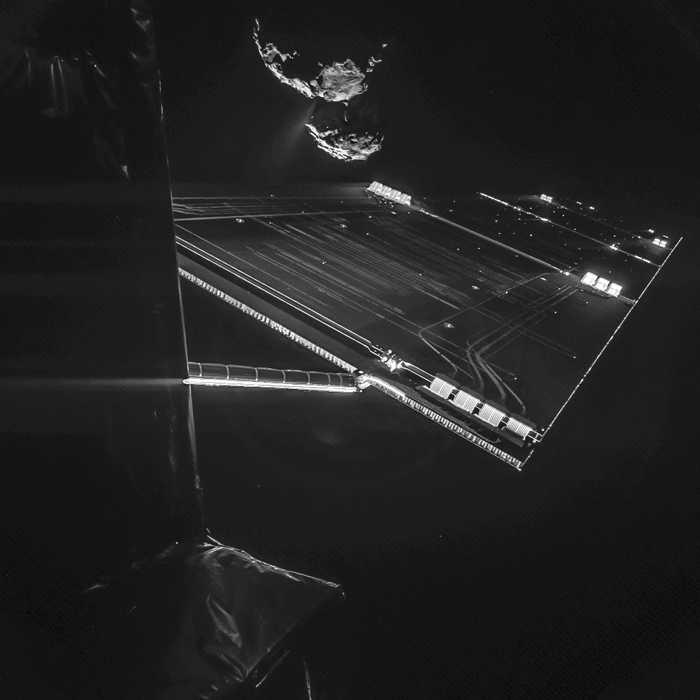Comet Lander Finds Chemical Building Blocks of Life in Atmosphere
Wednesday, November 19th, 2014November 19, 2014
Philae, the first robot probe to set down on the surface of a comet, detected molecules fundamental to the development of life on Earth in the thin atmosphere surrounding Comet Churyumov-Gerasimenko (67P). The molecules are “organics,” carbon-containing molecules that serve as the chemical building blocks of life as we know it. Philae landed on the comet on November 12 after a 10-year, 310-million-mile (500-million-kilometer) journey from Earth as part of the European Space Agency’s Rosetta mission.
Many scientists believe that life on Earth arose from organics that formed simple compounds, which then combined with one another to form the complex structures associated with living things. According to one theory, organic molecules or compounds may have arrived on Earth in meteorites or comets. Scientists have discovered several organic compounds in a number of carbon-rich meteorites called carbonaceous chondrites. In addition, organics were also among the samples collected and returned to Earth by the U.S. spacecraft Stardust from Comet Wild 2 in 2004.

The lander Philae (left) sits on the surface of Comet 67P in a photo taken by a camera on the Rosetta orbiter. (ESA/Rosetta/Philae/CIVA)
Philae, which is equipped with 10 scientific instruments, collected information for some 60 hours before mission scientists sent it into hibernation. The lander did not function as long as scientists had hoped because it landed in the shadow of a cliff, which blocked sunlight from its solar panels. While active, Philae also determined that the comet’s surface is covered by layer of dust 4 to 8 inches (10-20 centimeters) thick. Beneath the dust is very hard water ice. The ice is so hard that the lander’s drill had difficulty breaking through to collect a sample. Before it set down, Philae recorded the temperature on the comet’s surface as -243 °F (-153 °C). Rosetta scientists hope that as 67P and the orbiting Rosetta satellite make their way toward the sun, the solar batteries on Philae will recharge, allowing the lander to resume its on-site study of the comet.
Additional World Book articles:
For additional information about the Rosetta missions, see: http://rosetta.esa.int/



